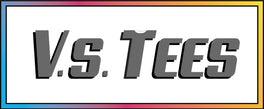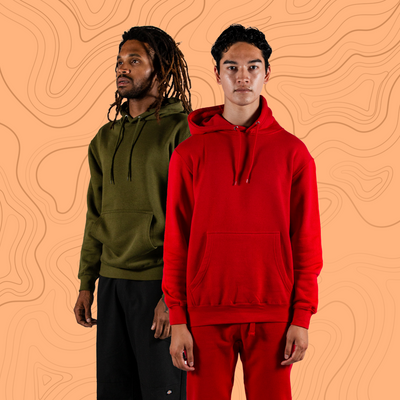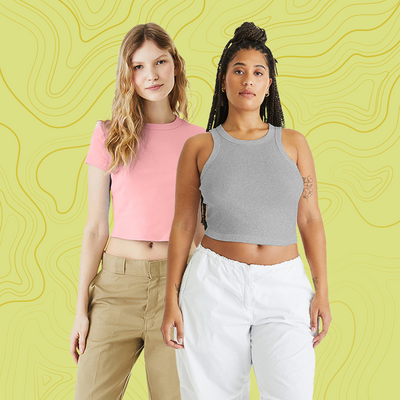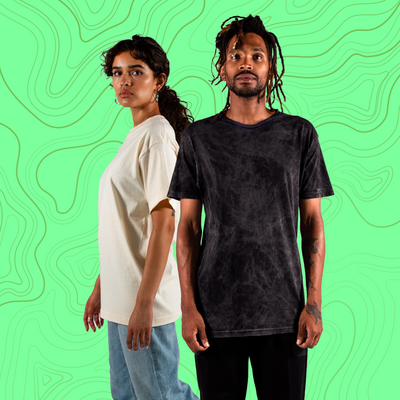4 Types of T-Shirt Printing
Posted by VS TEES
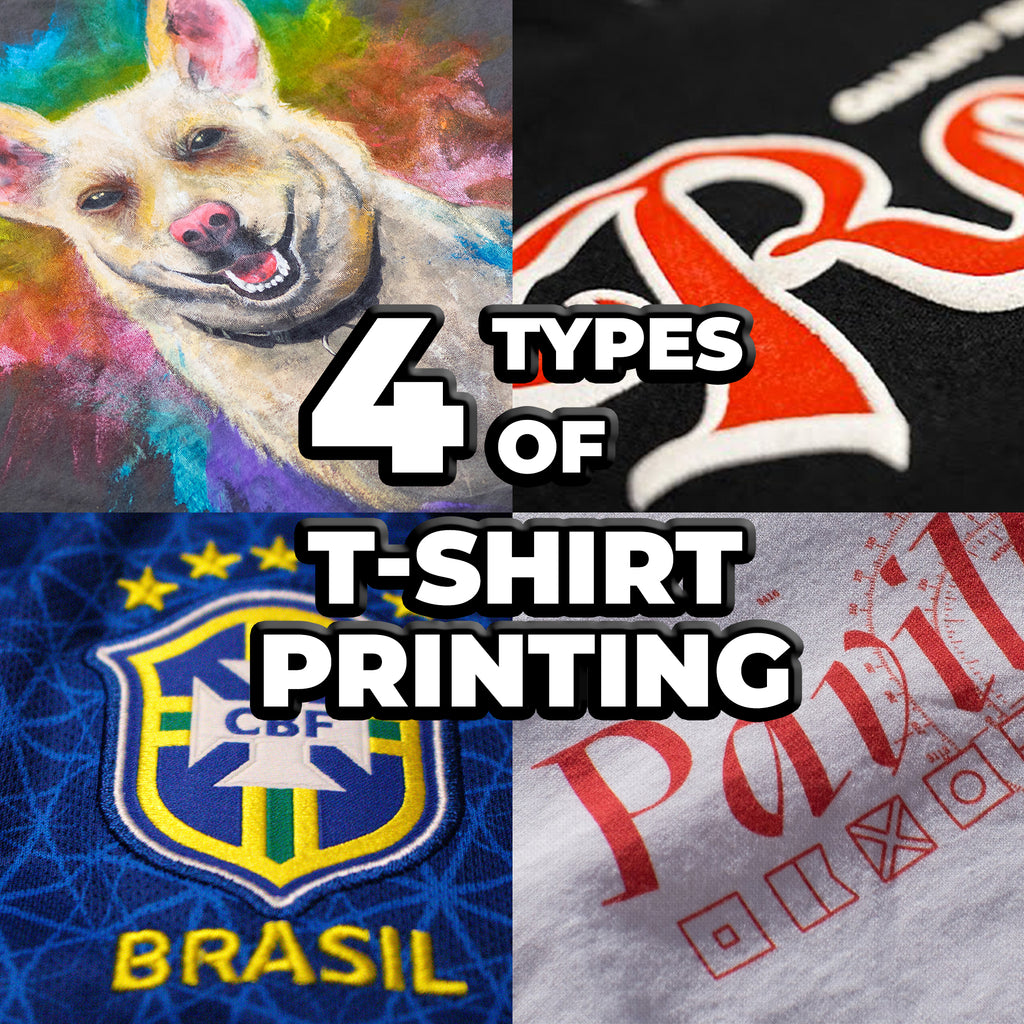
If you want to order personalized unisex t-shirts for special events or business affairs, you must first decide on the printing type. Each printing technique has its distinct style and degree of complexity. How would you choose which type of t-shirt printing to use when there are so many options?
This article will explain the four most common types of t-shirt printing. You'll discover which t-shirt printing techniques last the longest and are the economical options. Most importantly, this can also guide you when starting your clothing line!

1. Screen print
Screen printing is a high-quality t-shirt method that allows creativity and craftsmanship. It is one of the earliest printing techniques.
To screen print, you create a stencil design on the screen. Then, the screen is pressed into the t-shirt with plastisol ink. The ink forces ink through the stencil's negative space and onto the garment.
Screen printing's benefits make it successful among professional t-shirt designers and home artists. It produces colorful, long-lasting designs. The plastisol ink used in screen printing soaks into the cloth, making it more durable.
Screen printing is cost-effective for big purchases since you may reuse the screen in many quantities.
Some potential drawbacks of screen printing may include using bigger space to work and significant equipment like screens and a press to align the garment. Complex designs require unique chemicals. Screen print designs work well with one to three colors since you overlay each screen individually.
What are the advantages of screen printing?
- Screen printing is best for simple designs with fewer color options.
- The ink used in the screen printing process fuses over the fabric, making the design look more precise and sharper and excellent on any color of garments!
- Designs made through screen printing can handle heat and water without much problem.
- The print won't easily chip because of the special ink used in screen printing. With this, your design will likely retain its quality throughout the years.
- It barely needs any form of special care when maintained.

2. Puff Print
Business owners are always looking for a strategy to differentiate their clothing line from competitors. Puff ink printing is an excellent option for customers who want something new and unique. It adds an "oomph" factor and character to your clothes. To put it simply, it is a printing method with special effects.
Instead of ink, puff printing uses an additive to the plastisol ink that adds that unique 3D look to your tri blend shirt. The design will raise and 'puff' when applying heat to the ink.
The additive is placed on a specific spot to make a significant raise on your puff printed shirt.
Puff printing is excellent for drawing lines around places. Texts also look great with raised edges. It does not matter whether your design has single or multiple colors, the character that the puff printing adds will giveaway the wow factor of your shirt.
Among puff printing's advantages is creating designs with different colors. It's known for its durability strength and will not easily crumble or peel off. It is also suitable for printing on a wide range of fabrics.
On the other side, one drawback is it's challenging to match Pantone ink colors when printing using puff ink since the puff ink additive alters the colors in various ways. As a rule of thumb, lighter shades of Pantone colors are easier to match than darker ones.
How to take care of your Puff Printed shirt?
To maintain the quality of the puff printed garment, always wash it only with cold water, avoid ironing over the print, and do not use a tumble-dryer.

3. DTG -Direct To Garment
"Direct to Garment Printing" is the abbreviation for DTG. Direct to fabric printing, or DTF. To put it simply, it is a particular printer that uses thin ink to print directly onto the fabric of your bella canvas t-shirt! As a result, you'll be able to design anything you'd be able to print on paper. Colors, complexity, and even images are all options. Because the ink penetrates the shirt's fabric to some extent, the design seems supply to the touch rather than stiff. Another benefit of this technique is that you don't need to spend much time setting up a new design.
DTG has a few drawbacks. The cost of a decent DTG printer ranges from $10,000 to $500,000, depending on the model. Because of this, it may be worth it for someone who plans to create a T-shirt business, but this is not the ideal option for home use.
Lastly, although DTG designs appear great, they are not as durable as other designs made from other printing methods.
Why should I consider Direct to Garment Printing?
- The DTG printing style is best for intricate and colorful layouts since the digital printer captures small details such as photographs and complex artworks.
- The water-based ink used in DTG printing sits within the fabric, ensuring durability and premium print quality. Plus, it is known for its environmentally friendly ink.
- DTG printing is ideal for retail and merchandise products.

4. Embroidery
A whole new universe of creative possibilities is accessible when you learn to embroider. Embroidered logo patches or custom embroidered t-shirts may make your business, sports team, or simple reunion extra professional.
But how can you determine if embroidery suits your company's custom apparel demands? The following are simple tips and tricks you need to know about embroidery!
Embroidery isn't limited to t-shirts. With garment embroidery, you may also embroider a wide variety of items such as hoodies, caps/hats, tote bags, and many more!
Embroidery gives more color options than screen printing to market your brand. Most of its thread shades follow the Pantone color matching system which makes color matching easy.
Screen-printed shirts are cheaper than embroidered ones, but the colors fade faster. Screen-printed t-shirts tend to fade with each wash. Multiple washing don't dull embroidered stitches.
Interested in designing fleece wear for your staff or customers? Logos on fleece coats tend to crack or flake off due to their fuzzy nature. Embroidered fleece clothing lasts longer and looks more professional.
Multicolor logos or designs look fantastic on embroidered clothes. Unlike other personalization options like screen printing, embroidery usually doesn't charge extra for numerous colors.
Here are ways how to take care of your embroidered clothes from KYS:
- Wash all embroidered garments with a mild detergent.
- Do not use chlorine bleach or optical brightening agents.
- If bleach is required for washing, use non-chlorine bleach following product instructions.
- Machine wash cold water.
- Delicate wash cycle.
- If color residue appears in the water, rinse first in lukewarm water and then cold several times until rinse water becomes clear.
- Remove promptly after wash cycle completion.
- Never leave any piece of embroidered clothing soaking or in water or lying in a pile when wet.
- Upon completing the washing cycle, place articles immediately in the dryer, and use a standard-setting. (For best results, we recommend preheating the dryer.)
- Do not wring out the embroidered articles.
- Do not rub stained embroidery.

